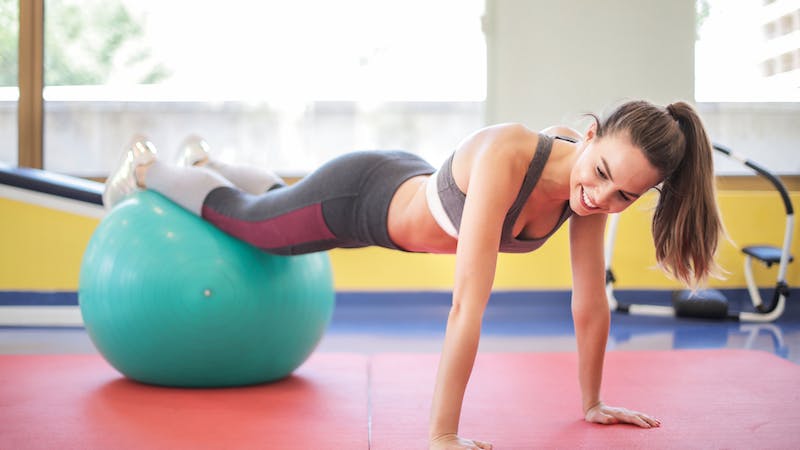Safe Exercise Practices: Preventing Injuries for a Healthier Workout Journey
Exercise is a fantastic way to stay fit and healthy, but it’s crucial to prioritize safety to avoid injuries that could sideline your fitness goals. For example, you can always find good physical therapy in Providence, or wherever you live, but it’s better to start safely. Whether you’re a seasoned gym-goer or just starting, adopting a few simple strategies can significantly reduce your risk of getting hurt while exercising.

1. Start Slow and Progress Gradually
Rome wasn’t built in a day, and neither should your fitness routine. Begin with low-impact exercises and lighter weights if you’re weightlifting. Gradually increase the intensity and duration of your workouts to allow your body time to adapt. Rushing into high-intensity exercises without proper conditioning increases the risk of strains and sprains.
2. Warm-Up and Cool Down
A proper warm-up is key to preparing your body for exercise. Spend 5-10 minutes doing dynamic movements like arm circles, leg swings, or a light jog to increase blood flow and loosen up muscles. Similarly, a cool-down period helps your heart rate return to its normal pace and prevents stiffness. Stretching post-workout can also improve flexibility and reduce muscle soreness.
3. Correct Form is Crucial
Whether you’re lifting weights, doing yoga, or running, using the correct form is vital. Poor form not only reduces the effectiveness of your workout but also increases the risk of injury. Consider working with a trainer initially to learn proper techniques and form. Pay attention to your body alignment, avoid overextending joints, and ensure controlled movements to prevent undue stress on muscles and ligaments.
4. Listen to Your Body
Pain is your body’s way of signaling something isn’t right. If you experience sharp or persistent pain during exercise, stop immediately. Pushing through pain can lead to more severe injuries. It’s okay to challenge yourself, but there’s a difference between discomfort from exertion and pain from injury.
5. Proper Gear and Equipment
Investing in appropriate workout gear and equipment can significantly reduce the risk of injury. This includes wearing proper footwear with adequate support for your chosen activity, using well-maintained equipment, and wearing protective gear like helmets or pads for certain sports. Ill-fitting shoes or worn-out equipment can increase the likelihood of accidents.
6. Cross-Training and Rest Days
Repetitive strain from doing the same exercises every day can lead to overuse injuries. Incorporate variety into your routine by cross-training with different activities. Additionally, don’t underestimate the importance of rest days. Rest allows your body time to recover and repair itself, preventing burnout and reducing the risk of overtraining injuries.
7. Stay Hydrated and Properly Fueled
Dehydration and improper nutrition can impact your performance and increase the likelihood of injuries. Ensure you’re adequately hydrated before, during, and after your workout. Additionally, maintain a balanced diet to provide your body with the necessary nutrients to support your exercise routine.
8. Gradual Increases in Intensity
When increasing the intensity of your workouts, do so gradually. Sudden spikes in intensity or adding excessive weight can strain your muscles and joints. Aim for incremental increases in weight, duration, or intensity to give your body time to adapt and prevent overexertion.
9. Recovery Techniques
Incorporating recovery techniques like massages, foam rolling, or using compression gear can aid in muscle recovery and reduce the risk of injury. These techniques can help alleviate muscle tightness and improve blood circulation, promoting faster recovery between workouts.
10. Seek Professional Guidance
If you’re unsure about proper techniques, dealing with recurring pain, or aiming for specific fitness goals, consider consulting with a fitness professional. They can provide tailored guidance, design a safe workout plan, and offer valuable insights to prevent injuries.
11. Regular Health Check-Ups
Prioritize regular health check-ups to identify any underlying conditions or concerns that might affect your exercise routine. Knowing your body’s limitations and getting professional advice can help you tailor your workouts for safety and effectiveness. Incorporating these additional strategies into your fitness regimen strengthens your commitment to a safer and injury-free exercise experience.
By incorporating these practices into your exercise routine, you can significantly reduce the likelihood of injuries, allowing you to enjoy a healthier and more sustainable fitness journey. Remember, safety should always be a priority to ensure long-term fitness success.



